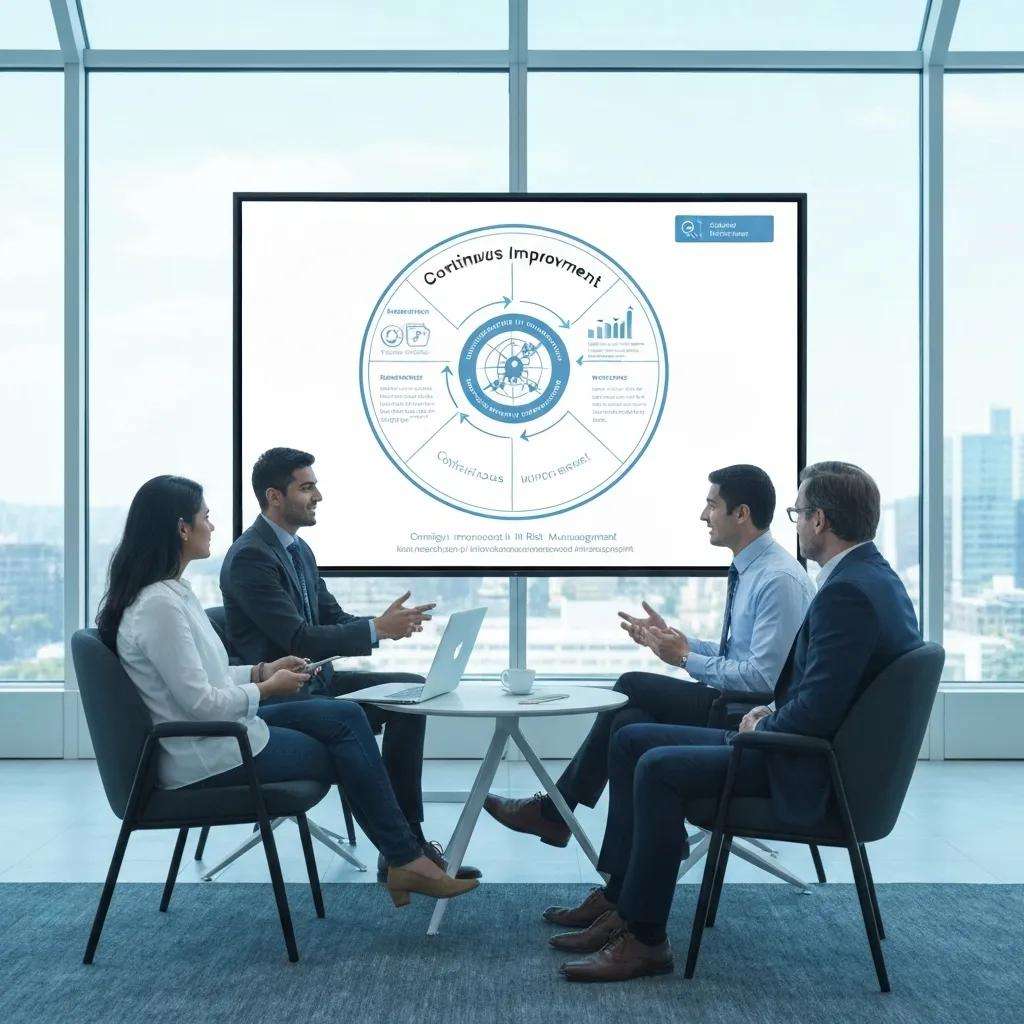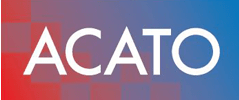Essential ISO 27001 Risk Assessment Checklist for Compliance

Step-by-Step ISO 27001 Risk Assessment Checklist for Compliance
Building a systematic ISO 27001 risk assessment checklist is critical for organizations to identify, evaluate, and treat information security risks while maintaining certification readiness. This guide delivers clear value by spelling out the pain of fragmented risk processes and promising a structured, step-by-step framework that aligns with ISO 27001 requirements. Readers will explore five essential risk assessment steps, indispensable documentation templates, Annex A control mapping, continuous improvement cycles, and integration best practices with GDPR, SOC 2, and NIST CSF.
IT Governance, 5 Steps to an Effective ISO 27001 Risk Assessment (2024-07-29)
ISO 27001 Risk Assessment: Essential Steps
The ISO 27001 risk assessment process establishes a formal methodology to identify and manage security risks, ensuring measurement of probability and consequence drives informed mitigation that strengthens compliance and resilience.
This citation supports the article’s claim about the importance of a structured risk assessment process aligned with ISO 27001 requirements.
What Are the Essential Steps in the ISO 27001 Risk Assessment Process?
The ISO 27001 risk assessment process establishes a formal methodology to identify and manage security risks, ensuring measurement of probability and consequence drives informed mitigation that strengthens compliance and resilience.
How Do You Define the ISMS Scope and Context?
Defining ISMS scope and context sets clear boundaries for risk assessment by aligning organizational objectives, stakeholder requirements, and risk criteria, which focuses efforts on relevant assets and environments.
- Identify business processes, information flows, and technology assets in scope.
- List interested parties (regulators, customers, partners) and their requirements.
- Document legal, regulatory, and contractual obligations affecting information security.
- Establish risk evaluation criteria (impact thresholds, risk appetite, risk owner roles).
IT Governance, 5 Steps to an Effective ISO 27001 Risk Assessment (2024-07-29)
ISO 27001 Risk Management Framework
Your risk management framework establishes the basis of your risk assessments. So, it must take into account: the rules governing how you intend to identify risks, to whom you will assign risk ownership, how the risks impact the confidentiality, integrity and availability of the information and the method of calculating the estimated impact and likelihood of the risk occurring.
This citation supports the article’s discussion on defining the ISMS scope and context, which is a crucial first step in the risk assessment process.
This scoped context ensures subsequent steps address only pertinent risks and leads directly into asset and threat identification.
What Is Involved in Identifying Assets, Threats, and Vulnerabilities?
Identifying assets, threats, and vulnerabilities involves compiling a comprehensive asset inventory, threat catalog, and vulnerability assessment to create a solid foundation for risk analysis.
- Maintain an up-to-date inventory of hardware, software, data, and personnel.
- Develop a threat register listing internal/external threat sources (malware, insider errors, physical breach).
- Conduct vulnerability scans and gap analyses against asset configurations and procedures.
A complete profile of assets and their exposures enables accurate measurement of likelihood and impact.
How Do You Analyze Risk Likelihood and Impact?
Analyzing risk likelihood and impact quantifies exposure by assigning probability ratings and consequence levels to each risk scenario, guiding resource allocation and risk prioritization.
- Define a likelihood scale (e.g., 1–5 where 5 = almost certain).
- Define an impact scale (e.g., 1–5 where 5 = catastrophic).
- Calculate risk levels by multiplying likelihood and impact scores.
Quantitative ratings support transparent decision-making and set the stage for effective evaluation.
How Are Risks Evaluated and Prioritized Effectively?

Effective risk evaluation and prioritization rank identified risks against established criteria to direct mitigation efforts toward the most significant exposures and maintain target risk levels.
| Risk Category | Likelihood (1–5) | Impact (1–5) |
|---|---|---|
| High | 4–5 | 4–5 |
| Medium | 2–3 | 2–3 |
| Low | 1 | 1 |
High scores indicate risks requiring immediate treatment, while low scores may be logged for periodic review. Prioritization data flows into the selection of risk treatment options.
What Are the Options for Risk Treatment in ISO 27001?
Risk treatment options in ISO 27001 include avoidance, reduction, transfer, and acceptance, offering tailored strategies that optimize security controls and compliance outcomes.
- Avoid the risk by removing the risky process or asset.
- Apply controls (mitigate) to decrease likelihood or impact.
- Transfer responsibility via insurance or third-party services.
- Accept residual risk when within defined risk appetite.
Selecting the right mix of these options ensures a balanced approach to resource use and risk reduction.
What Key Documentation Supports an ISO 27001 Risk Assessment?
Key documentation for an ISO 27001 risk assessment formalizes each stage, providing traceability of identified risks, treatment decisions, control justifications, and audit evidence to support certification.
How to Create and Manage an ISO 27001 Risk Register?
A risk register is a dynamic record listing each identified risk, its attributes, and management actions, serving as the central tool for risk tracking and control monitoring.
- Assign a unique risk ID and summary description.
- Record likelihood, impact, and calculated risk level.
- Designate a risk owner responsible for treatment actions.
- Update status fields (open, in progress, treated, accepted).
Maintaining a living register ensures transparency and enables real-time adjustments as new threats emerge.
What Is an ISO 27001 Risk Treatment Plan and How Is It Developed?
An ISO 27001 risk treatment plan outlines specific controls, responsibilities, and timelines for addressing identified risks, ensuring structured mitigation aligned with Annex A standards.
- Select appropriate Annex A controls or other safeguards.
- Define treatment actions, deliverables, and implementation steps.
- Assign owners and set target completion dates.
- Establish monitoring metrics and review intervals.
A well-documented plan guides execution and provides evidence of due diligence during audits.
What Is the Purpose of the Statement of Applicability (SoA)?
The Statement of Applicability (SoA) justifies the inclusion or exclusion of Annex A controls and indicates their implementation status, linking risk treatment decisions to audit requirements and compliance reporting.
- List each Annex A control with reference number.
- Provide rationale for control selection or exclusion.
- Indicate current implementation stage (planned, partial, complete).
- Cross-reference supporting documentation (policies, procedures).
The SoA bridges risk assessment outputs to formal control implementation in the ISMS.
How Should the Risk Assessment Report Be Structured?
A structured risk assessment report provides a comprehensive overview of methodology, findings, treatment decisions, and recommendations, enabling stakeholders to review ISMS performance and certification preparedness.
| Section | Content | Purpose |
|---|---|---|
| Introduction | Scope, context, objectives | Frame assessment goals and boundaries |
| Methodology | Steps, scales, tools used | Demonstrate systematic approach |
| Findings | Risk register summary, risk levels | Present identified risks and ratings |
| Treatment Plan | Selected controls, actions, owners, timeline | Detail mitigation strategy |
| Conclusions & Recommendations | Outstanding issues, next steps | Guide management decisions and continuous improvement |
This report format ensures clarity and supports informed decision-making at all management levels.
How Do ISO 27001 Annex A Controls Support Risk Treatment?
ISO 27001 Annex A controls compile a catalog of security measures grouped into categories that guide organizations in selecting safeguards to reduce risk levels and reinforce ISMS integrity.
Vanta, A breakdown of the ISO 27001 Annex A controls (2024)
ISO 27001 Annex A Controls
ISO 27001 Annex A controls are specific practices that help you meet the requirements of the standard’s clauses, which outline the process of building and maintaining your ISMS. The controls are prescriptive and laid out clearly enough to ensure implementation without guesswork.
This citation supports the article’s explanation of how ISO 27001 Annex A controls support risk treatment by providing a catalog of security measures.
What Are the Categories of Annex A Controls?
Annex A controls are organized into themes—organizational, people, physical, and technological measures—offering a holistic framework for risk mitigation across all domains.
| Control Category | Scope | Examples |
|---|---|---|
| Organizational | Governance and management | Information security policy, risk management |
| People | Staff and stakeholder responsibilities | Awareness training, background checks |
| Physical | Facility and equipment protection | Access controls, environmental safeguards |
| Technological | System and network security | Encryption, intrusion detection, patch management |
How Are Controls Mapped to Identified Risks?
Controls are mapped to risks by linking each risk scenario in the register to specific Annex A measures based on risk analysis, enabling targeted control implementation and traceable mitigation.
- Reference risk IDs against control numbers in the SoA.
- Document mapping relationships in the risk register.
- Update treatment plan with control deployment dates.
- Validate effectiveness through testing and monitoring metrics.
A precise mapping process creates accountability and simplifies audit evidence collection.
What Are Best Practices for Implementing Security Controls?
Best practices for control implementation include assigning clear ownership, embedding controls into business processes, validating effectiveness through testing, and monitoring performance metrics to ensure sustained risk reduction.
- Appoint control owners with defined responsibilities.
- Integrate controls into standard operating procedures.
- Conduct periodic control effectiveness reviews.
- Automate monitoring where possible for real-time alerts.
Adhering to these practices turns policies into active defenses that adapt with evolving threats.
Why Is Continuous Improvement Important in ISO 27001 Risk Management?

Continuous improvement cycles embed monitoring, review, and corrective actions into the ISMS to maintain relevance, adapt to emerging risks, and support ongoing certification and business resilience.
How Is Risk Monitoring and Review Conducted?
Risk monitoring and review involves measuring control performance, analyzing trends, and updating risk assessments based on new threats or organizational changes, ensuring the ISMS remains responsive.
- Define key risk indicators (KRIs) and key performance indicators (KPIs).
- Generate periodic risk reports comparing current and target levels.
- Update risk register and treatment plan after significant changes.
Proactive monitoring maintains alignment between security posture and threat landscape.
What Role Do Internal Audits Play in Risk Assessment?
Internal audits systematically evaluate ISMS processes—including risk assessment effectiveness and control adherence—providing independent assurance and identifying improvement opportunities.
- Schedule audits against planned intervals and events.
- Use audit checklists to verify policy compliance.
- Record non-conformities and track corrective action items.
Audit findings feed directly into continuous improvement initiatives and management reviews.
How Does Management Review Enhance ISMS Performance?
Management review evaluates risk assessment outcomes, resource adequacy, and corrective actions at the leadership level, driving strategic decisions that bolster information security governance.
- Present summarized risk metrics and audit results to top management.
- Assess alignment with business objectives and legal requirements.
- Allocate resources for new or revised controls.
- Set targets for the next review cycle.
Strategic oversight ensures the ISMS evolves with organizational priorities and threat vectors.
How Does ISO 27001 Risk Assessment Integrate with Other Compliance Frameworks?
ISO 27001 risk assessment integrates with other frameworks by aligning risk criteria, control objectives, and documentation requirements, streamlining audits and regulatory compliance across multiple standards.
What Are the Synergies Between ISO 27001 and GDPR Risk Assessments?
ISO 27001 and GDPR risk assessments share the goal of protecting personal data by identifying processing risks and selecting controls, enabling combined workflows that reduce duplication and enhance data privacy governance.
Strike Graph, ISO 27001 & 27701 vs. GDPR: Differences, Mapping & Bundling (2025-07-30)
ISO 27001 and GDPR Integration
ISO 27001 and GDPR both help protect data. They require risk checks, ways to limit who can access information, and clear plans for handling problems. They also ask companies to train employees and check vendor security.
This citation supports the article’s discussion on the synergies between ISO 27001 and GDPR risk assessments, highlighting their shared goals in data protection.
- Use a unified risk register for both personal and non-personal data.
- Align control objectives (e.g., encryption, access logging) with GDPR Article 32.
- Document processing activities and risk treatments in a consolidated SoA.
Combined assessments foster efficiency and consistent protection of sensitive information.
How Does ISO 27001 Compare with SOC 2 in Risk Management?
ISO 27001 emphasizes a systematic ISMS approach while SOC 2 focuses on service trust principles, but both require risk identification and control selection, allowing organizations to leverage one assessment to satisfy both certification requirements.
- Map ISO 27001 Annex A controls to SOC 2 Trust Services Criteria.
- Use shared evidence (policies, logs, test results) for dual audits.
- Harmonize reporting formats to meet both standards’ auditors.
A unified process reduces audit fatigue and consolidates security efforts.
What Is the Relationship Between ISO 27001 and NIST CSF?
ISO 27001 and NIST CSF complement each other by pairing ISO’s comprehensive management system with NIST’s detailed cybersecurity framework, mapping NIST functions to Annex A controls for integrated risk management.
- Align NIST Functions (Identify, Protect, Detect, Respond, Recover) with ISO 27001 clauses and controls.
- Use CSF profile development to tailor Annex A implementation.
- Share measurement dashboards for real-time compliance insights.
This integration offers a powerful dual-framework approach that balances management rigor with technical depth.
A robust ISO 27001 risk assessment checklist consolidates essential steps, critical documentation, Annex A control mapping, continuous improvement cycles, and compliance synergies into a unified framework. By following this structured guide, organizations enhance their ISMS, streamline audits, and maintain resilience against evolving threats. Continuous monitoring, internal audits, and management reviews close the loop on ongoing enhancement, while integration with GDPR, SOC 2, and NIST CSF ensures broad regulatory alignment. Implementing these essentials fortifies information security, accelerates certification, and promotes business continuity.
